Mobile game in Buitenhof
Type: MSc Graduation Internship
Role: UX/UI Designer
Year: 2024
Buitenhof is a neighborhood in Delft (Netherlands) often described as socially and economically challenged, which fuels negative stereotypes. In reality, it’s home to a diverse and vibrant community. Through NOBIS, a collaborative mural art initiative by CANIDREAM Foundation and Museum Prinsenhof Delft, residents have been reclaiming their neighborhood’s identity. I built on this momentum, creating an interactive experience where visitors of the NOBIS murals could discover the real Buitenhof through the voices and stories of its residents.
Read the full thesisStigma and avoidance: Delft residents avoid Buitenhof because of its negative reputation. This lack of engagement reinforces the stigma and prevents outsiders from discovering the neighborhood.
Limited engagement with murals: While the NOBIS murals attract some visitors, interactions with the NOBIS murals often remain superficial. Visitors appreciate the art but miss the stories and voices behind it, leaving stereotypes unchallenged.
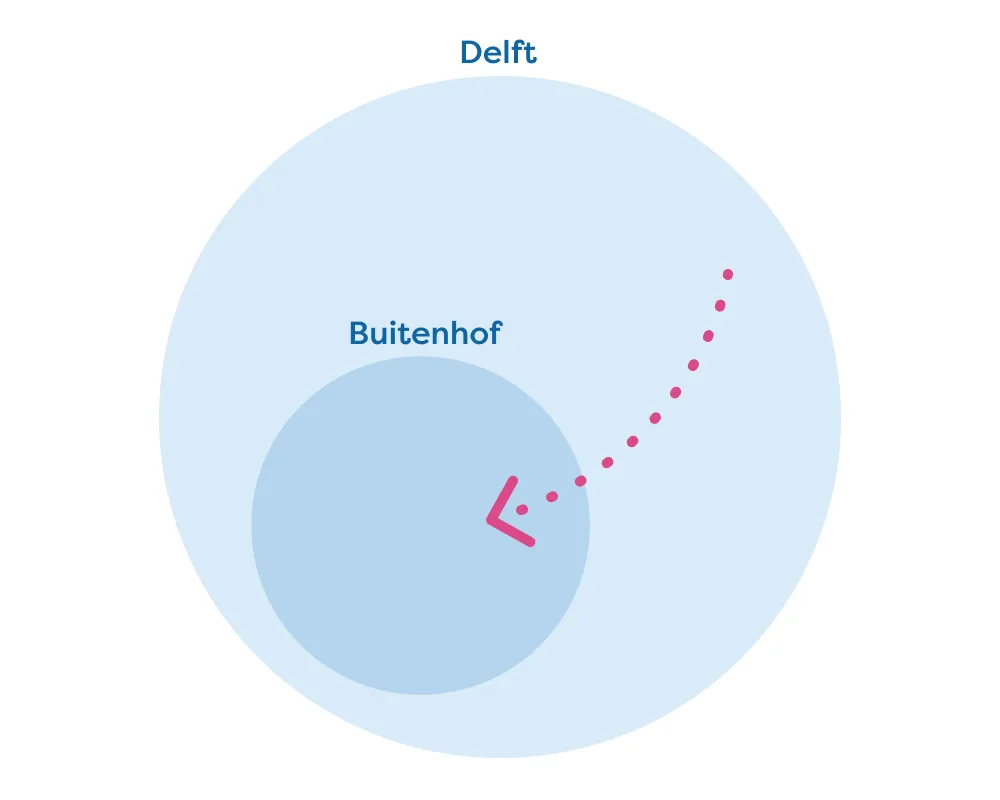
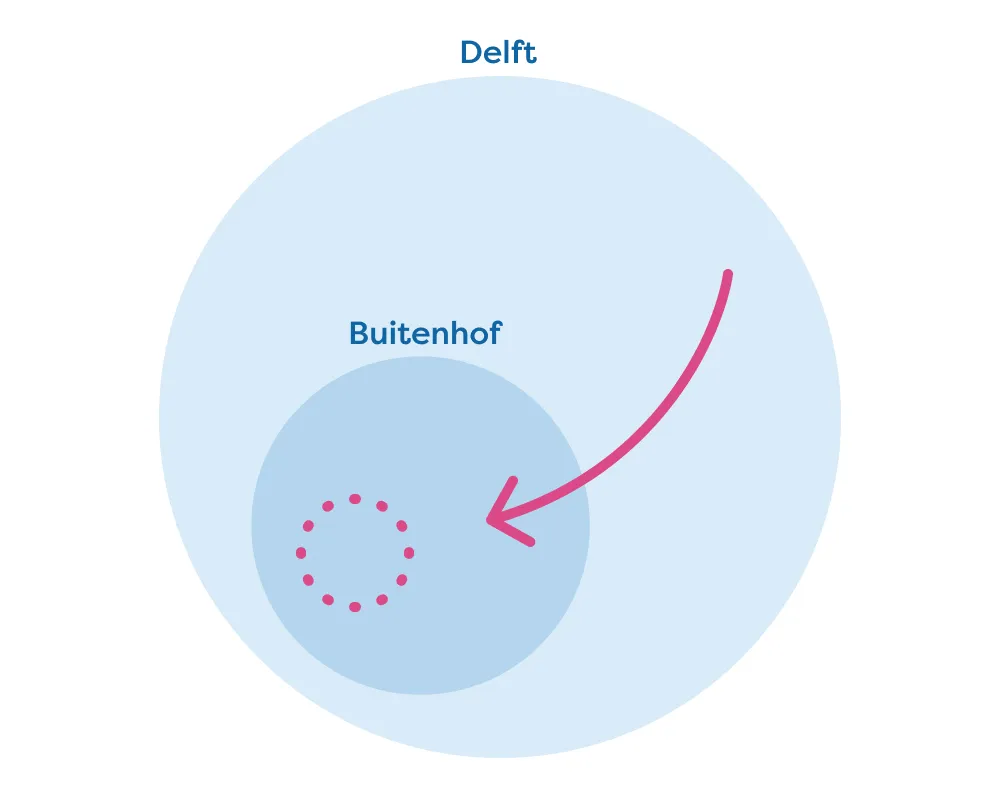
Create an experience that encourages visitors to interact meaningfully with the murals. The design should spark empathy toward its residents and help challenge negative stereotypes.
I explored both the social context of Buitenhof and how Delft residents perceived the NOBIS murals, using a variety of methods: online and offline surveys, interviews, participatory workshops, and observations of community activities.

Participatory workshop

Interview with residents

Observation during community painting
Based on the research findings, I explored solutions through three prototyping and testing iterations. Each iteration focused on a specific design question and involved Delft residents to ensure relevance. At each stage, I designed and tested three concepts, which allowed me to compare directions and incorporate feedback effectively.

Iteration 1: What medium is more effective?

Iteration 2: Which information sparks empathy?

Iteration 3: What interaction is the most engaging?
Start: Visitors begin at the mural, where a call-to-action sign invites them to scan a QR code to “discover what hides behind the mural.”

Explore and discover: Nine stars are hidden around the area. Each is physically marked with a code that unlocks an audio story.
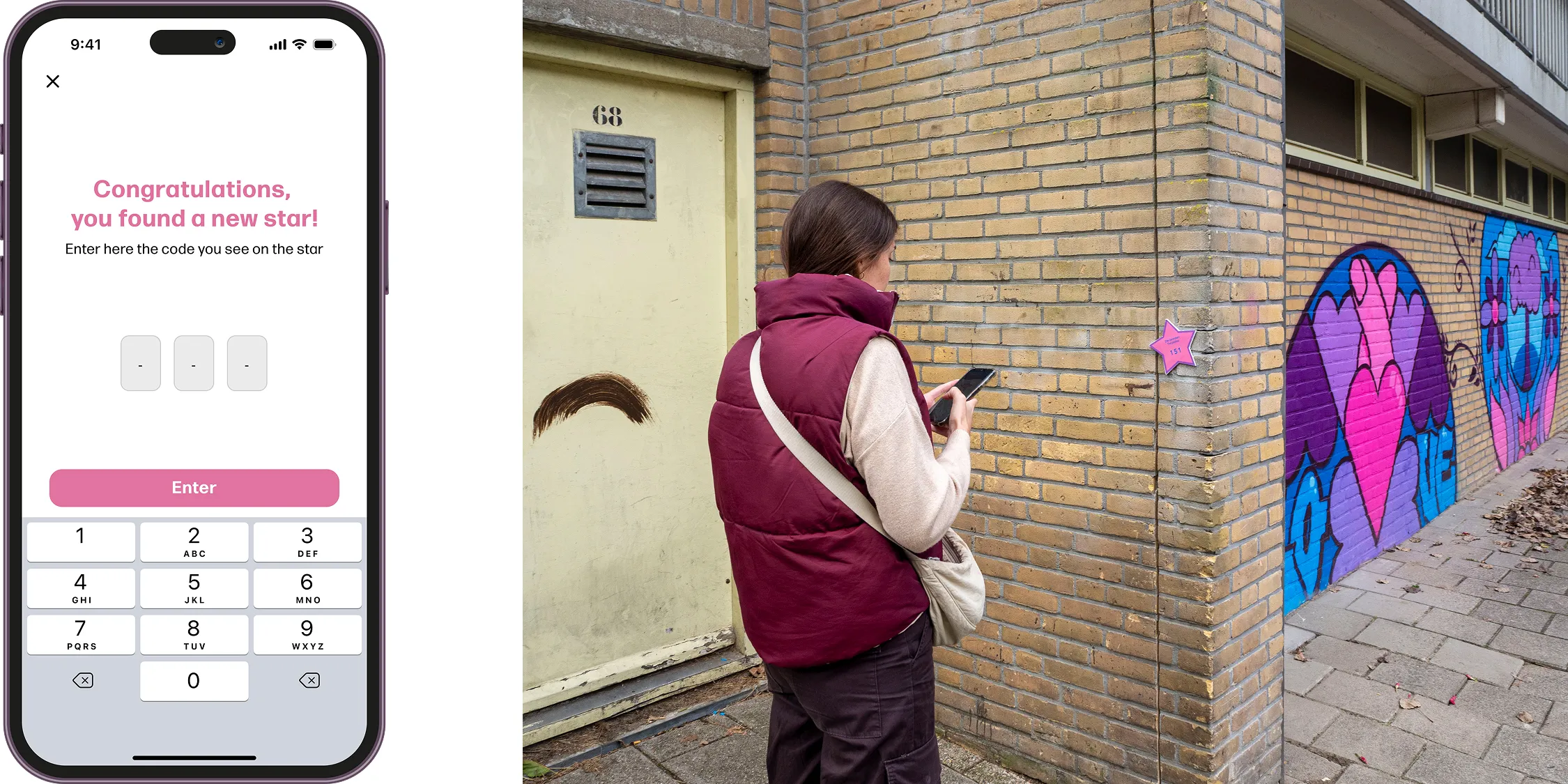
Listen and empathize: Every story features a resident or artist involved in the mural, sharing personal interpretations and experiences. These authentic voices humanize the neighborhood and challenge stereotypes.
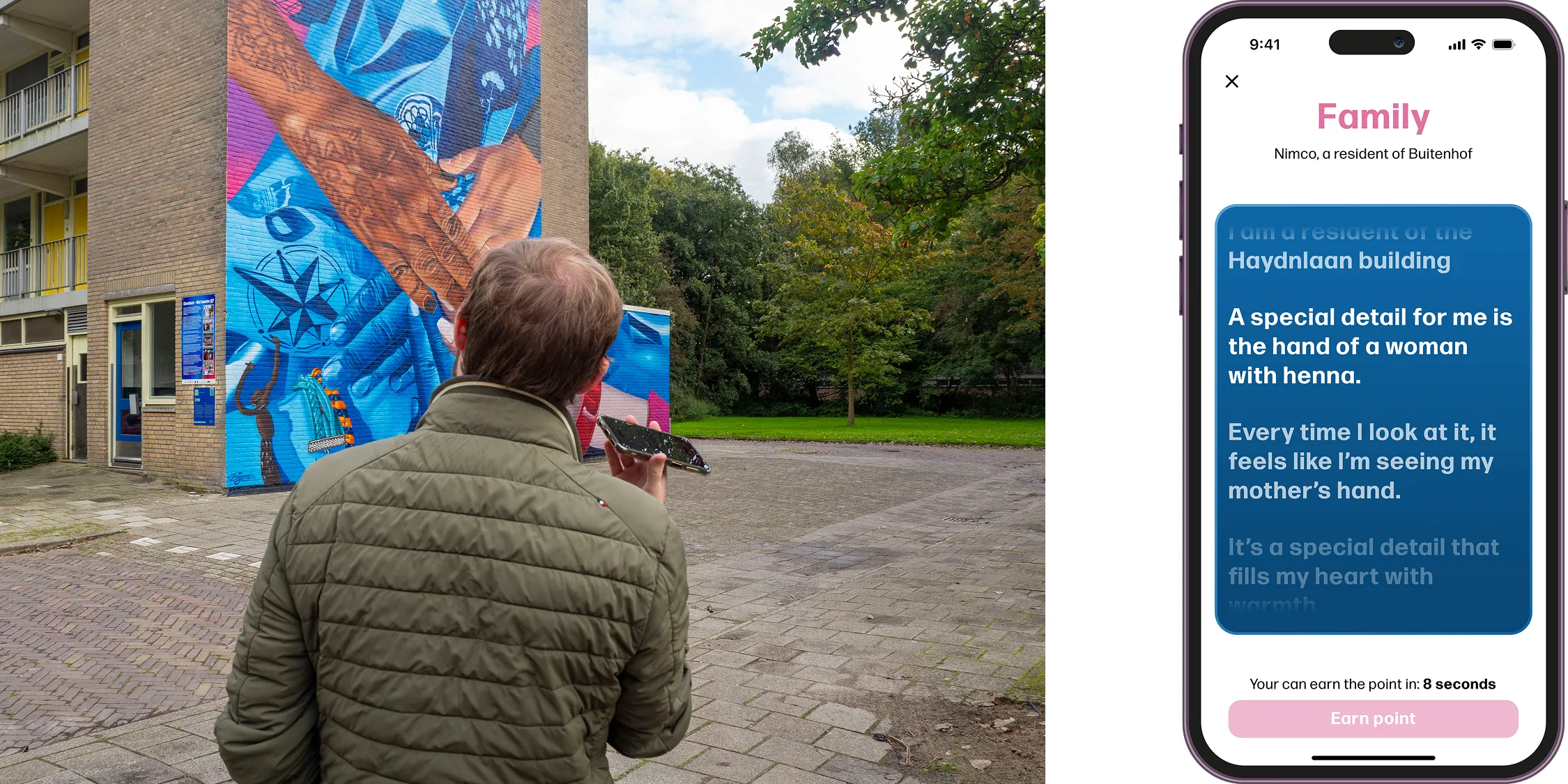
Track progress: A dynamic tracker shows how many stars have been found, keeping visitors motivated to continue exploring. Moving through the area independently, prompts firsthand experiences in the neighborhood.
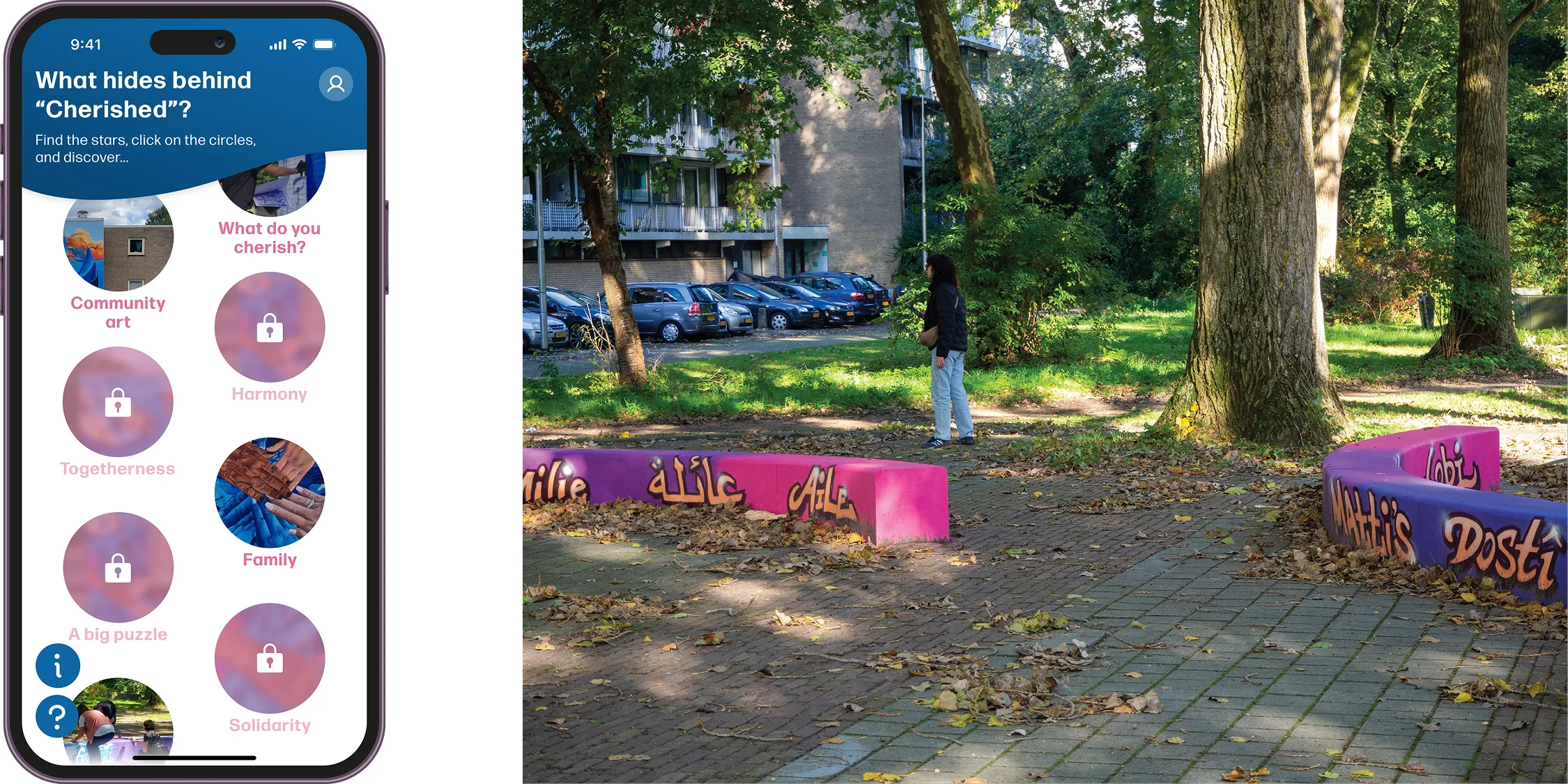
Closure and scalability: Collecting all stars unlocks a personalized page and access to other murals across Delft, laying the foundation for a scalable, city-wide experience.
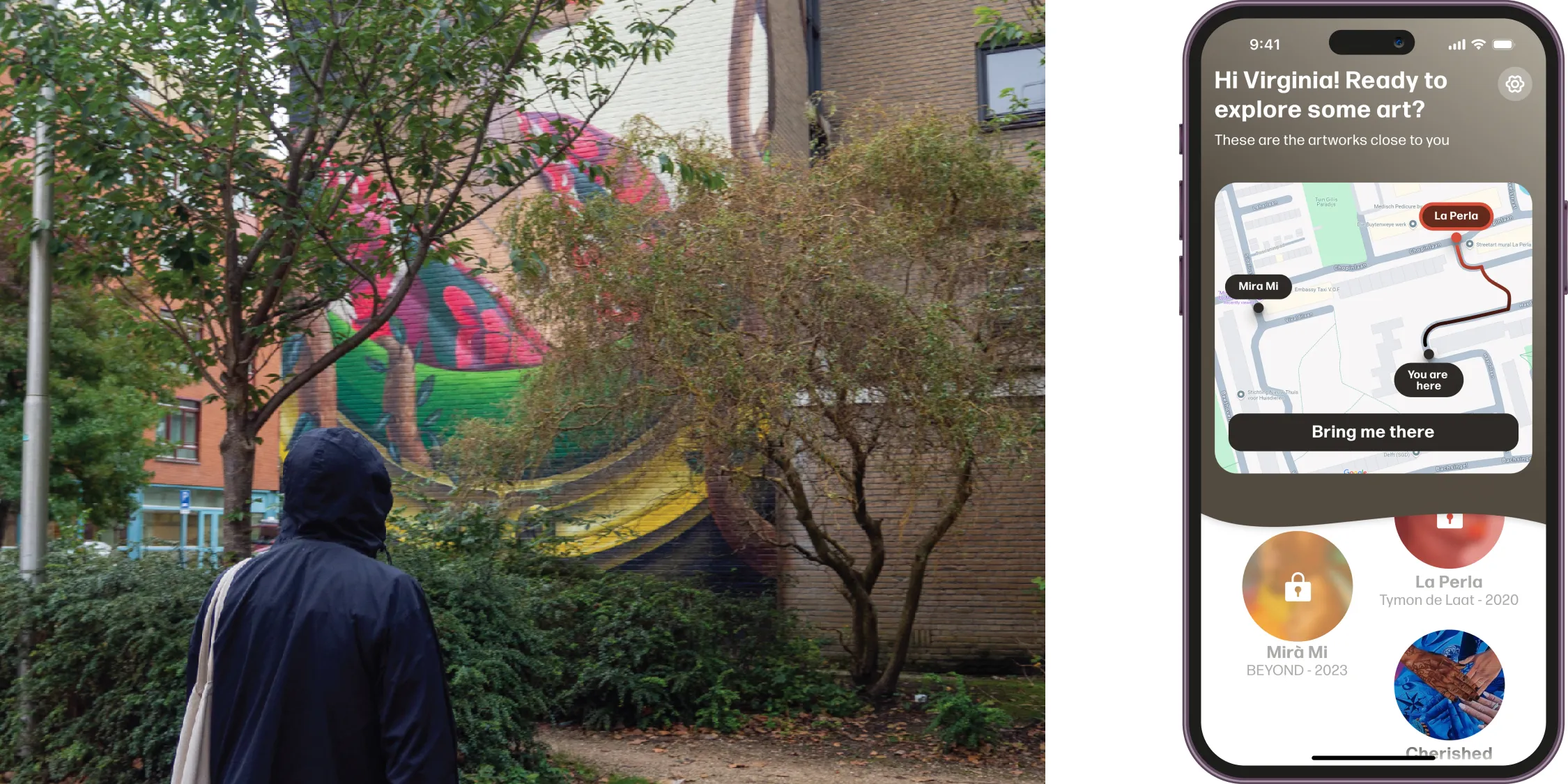
I translated the concept into wireframes to define the user flow and ensure a seamless transition between the physical and digital experience. The structure was kept deliberately simple:
Entry point and onboarding: Essential call-to-action to keep attention high, but possibility to learn more. The experience can start with or without signing up.

Playing: A tracker page motivates users to continue exploring and provides instant feedback on their progress, while the story pages are designed to provide minimal visual distraction, highlighting the audio stories.
Progress page: Only accessible after signing up, this page is designed to encourage further exploration across Delft at any point in time.
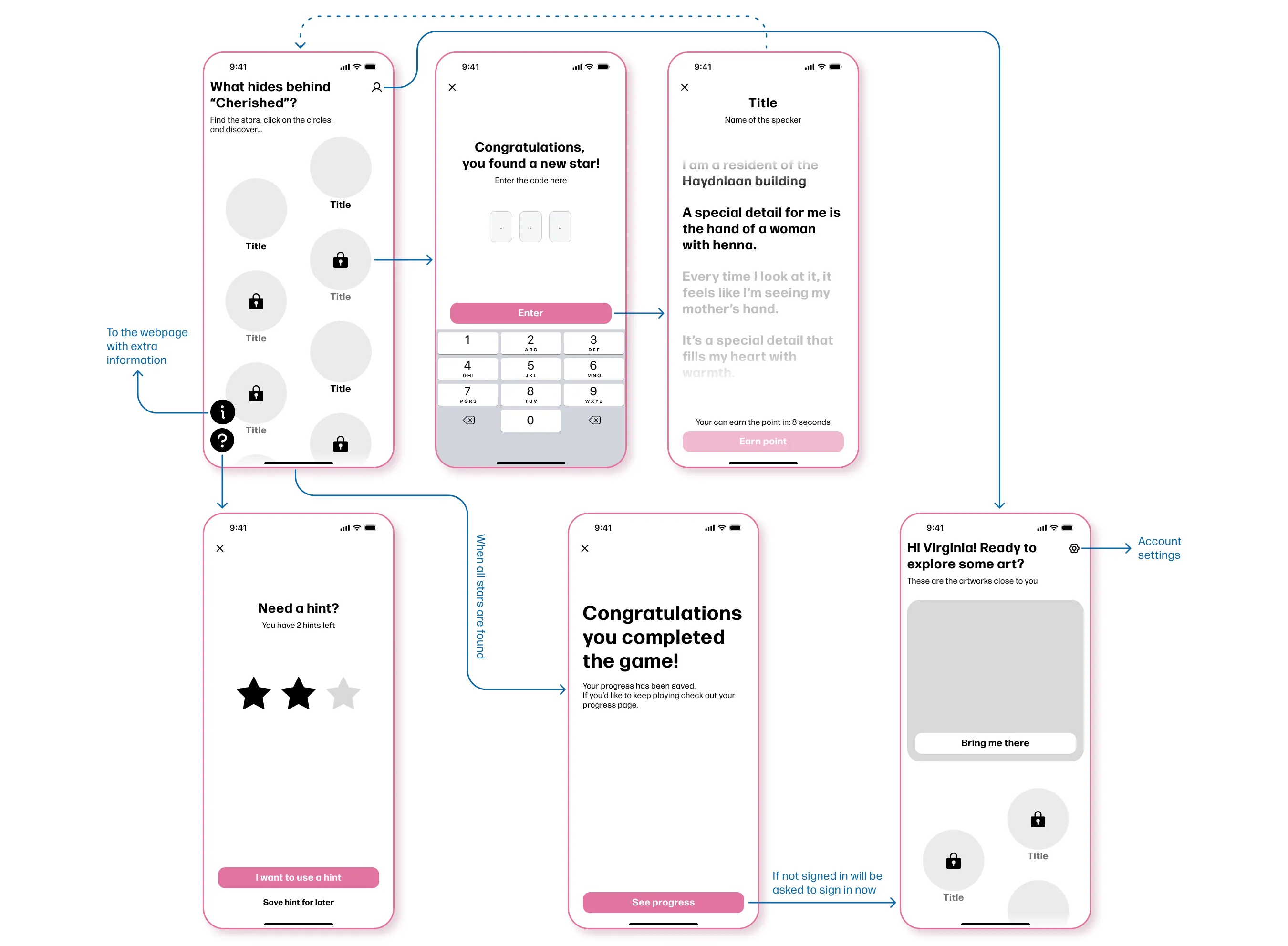
The UI is simple, avoiding competing with the artwork. Vibrant colors deriving from the murals state a clear connection with the artwork, and the bold shapes reinforce a playful feel. A consistent system that can be easily extended to future murals, supporting city-wide adoption.
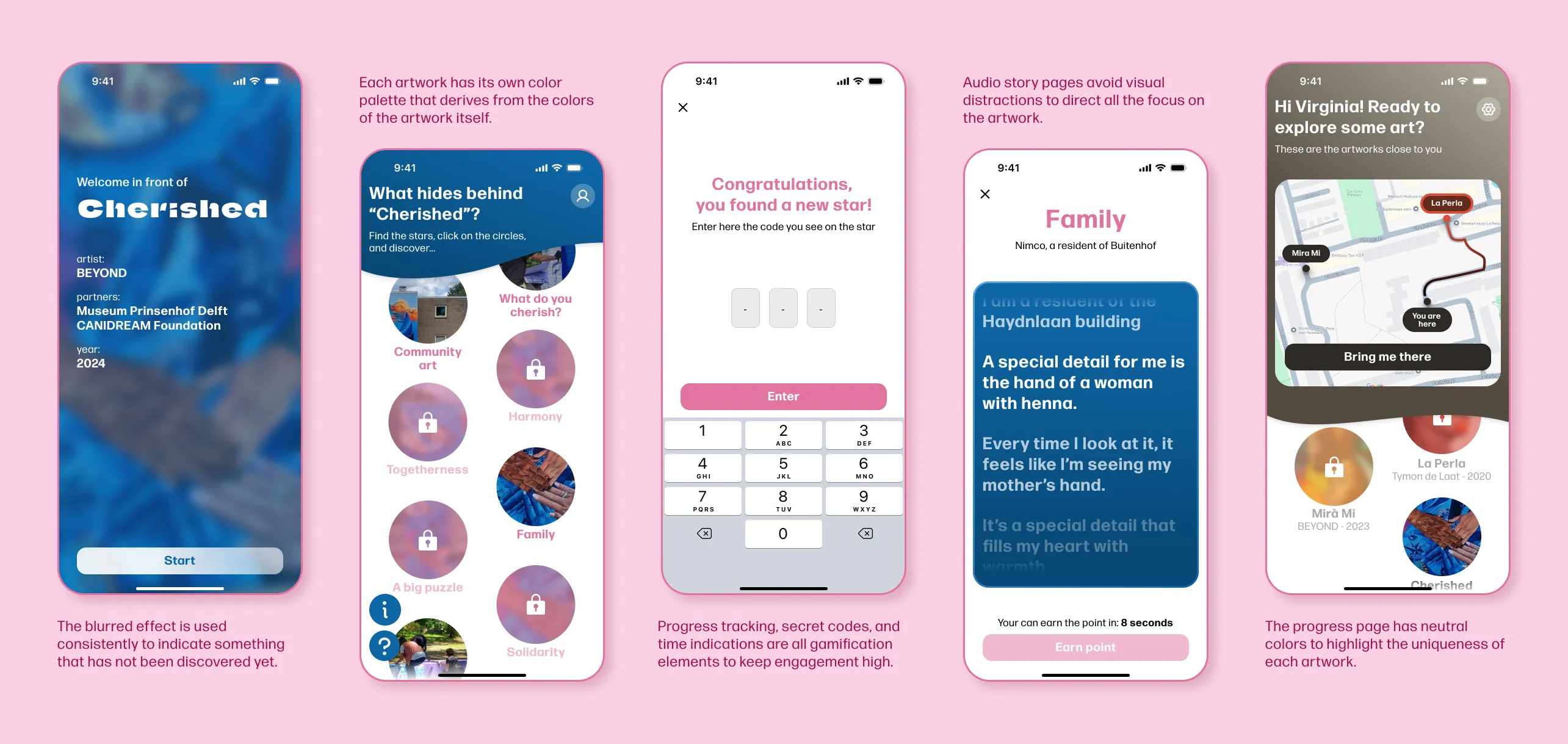
I tested the final prototype with five Delft residents in the actual context of the mural. The goal was to assess both the user experience and the potential impact of the concept. Participants interacted with the treasure hunt and were interviewed before and after to capture emotional shifts, usability insights, and overall perception.
Participants reported stronger empathy toward residents and felt more connected to the mural and positive about the neighborhood. Additionally, the star-finding mechanic and progress tracker successfully sustained attention and motivated participants to complete the journey.
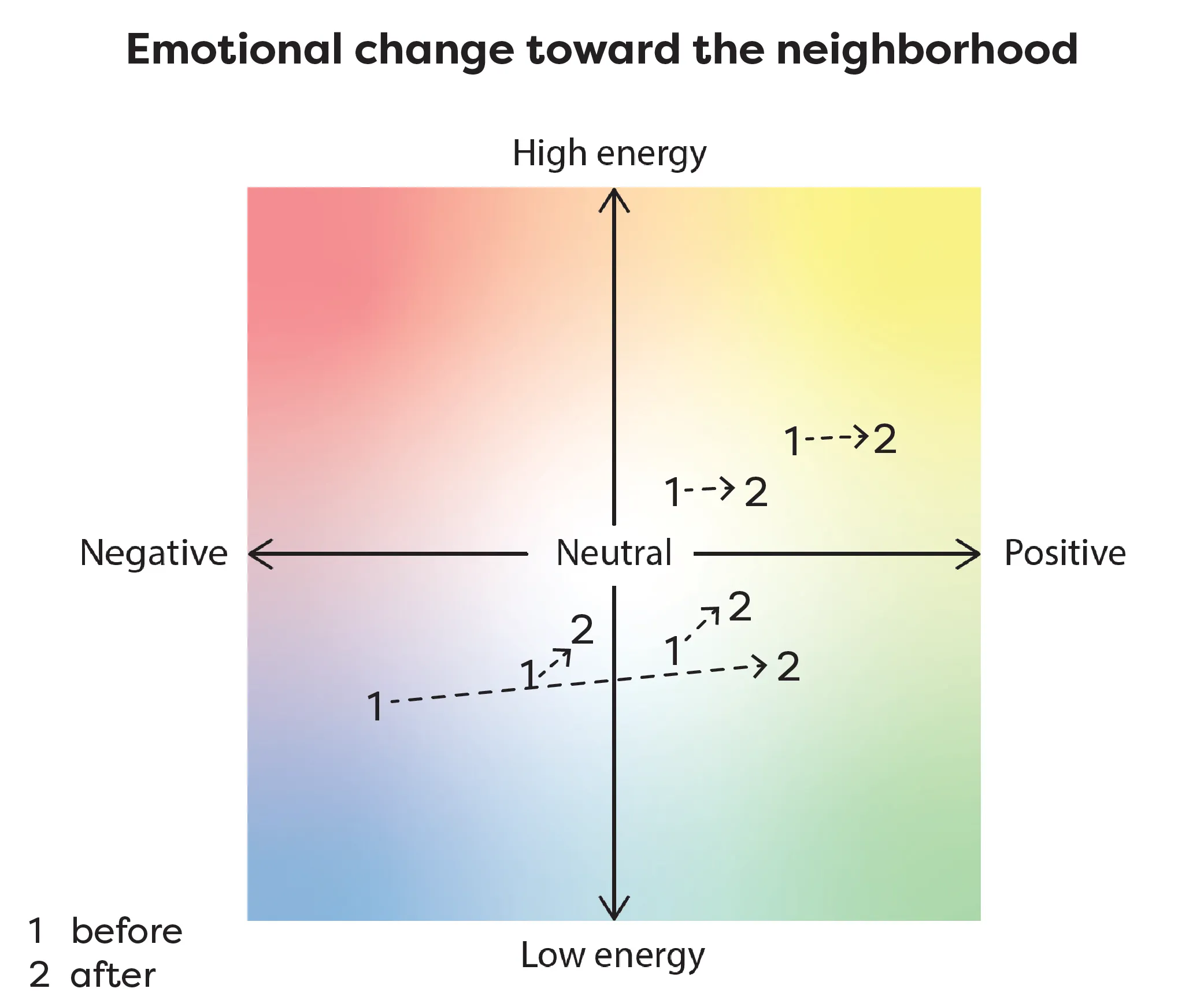
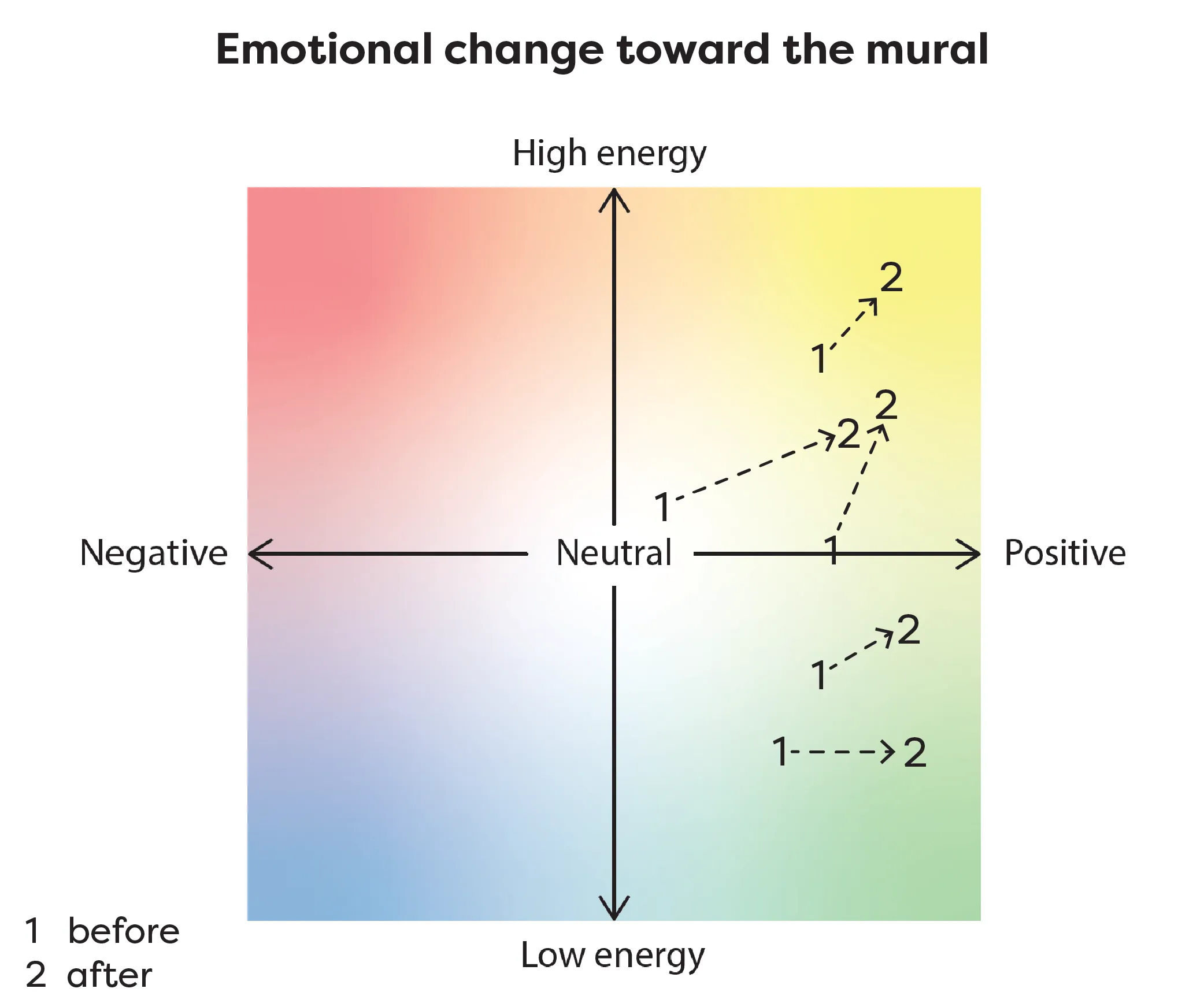

Over the course of my graduation, Voices of Buitenhof sparked some interest among the Delft community resulting in the project to be featured in two local newspapers (Verrassend Voorhof 7 and TeGek Tanthof 7) and the TU Delft website.
Read the article on the TU Delft website